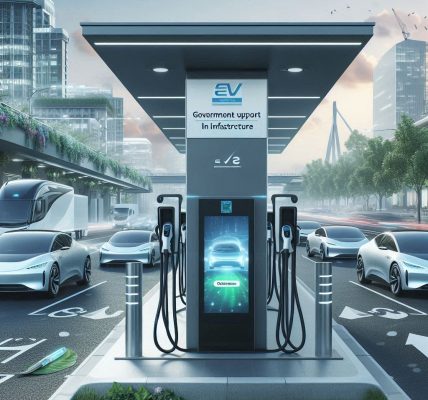As the world shifts towards sustainable energy solutions, governments worldwide, including India, are offering various subsidies and grants to promote renewable energy adoption. If you are planning to invest in solar or wind energy projects, government subsidies can significantly reduce costs and make your venture more feasible. This article explores the different subsidies available for solar and wind energy projects, eligibility criteria, and the application process to help you secure funding.
Why Government Subsidies for Renewable Energy?
Governments provide subsidies for renewable energy projects to:
- Reduce dependence on fossil fuels
- Lower carbon emissions
- Promote sustainable energy use
- Encourage individuals and businesses to adopt clean energy solutions
- Support innovation in renewable energy technology
With financial incentives, more businesses, homeowners, and industries can switch to renewable energy sources, contributing to a greener future.
Types of Renewable Energy Subsidies Available in India
The Indian government, along with state agencies, offers various financial assistance programs to encourage the adoption of solar and wind energy. Below are the key subsidies and grants available.
1. Central Financial Assistance (CFA) under MNRE
The Ministry of New and Renewable Energy (MNRE) provides financial assistance for solar and wind projects under different schemes.
- Solar Subsidy: Up to 40% subsidy for residential rooftop solar installations.
- Wind Energy Subsidy: Support for wind power plants under the Green Energy Corridor Scheme.
- Off-Grid Solar Subsidy: 30% subsidy for standalone solar-powered applications like solar water pumps and solar street lights.
2. Pradhan Mantri Kisan Urja Suraksha Evam Utthan Mahabhiyan (PM-KUSUM)
Aimed at farmers, this scheme provides subsidies for installing solar pumps and grid-connected solar plants.
- Component A: 30% subsidy for solarization of agricultural feeders.
- Component B: 30% subsidy on standalone solar pumps.
- Component C: Financial support for farmers to set up grid-connected solar power plants.
3. Solar Rooftop Subsidy by State Governments
In addition to central subsidies, many state governments offer incentives for solar rooftop installations. These include:
- Delhi: ₹10,000 per kW for residential consumers.
- Gujarat: 40% subsidy on solar rooftop systems up to 3 kW.
- Maharashtra: Additional state subsidies complementing central assistance.
4. Renewable Energy Certificates (REC)
Businesses investing in renewable energy can earn Renewable Energy Certificates (RECs), which can be traded in energy markets to generate additional revenue.
5. Accelerated Depreciation Benefit
Businesses investing in solar or wind energy can claim 40% accelerated depreciation, reducing taxable income and improving return on investment.
6. Green Energy Corridor Scheme
Designed to support large-scale renewable energy projects, this scheme provides funding for transmission infrastructure and grid integration.
How to Apply for Renewable Energy Subsidies?
To avail government subsidies and grants for solar or wind projects, follow these steps:
Step 1: Identify the Right Subsidy Scheme
Based on your project type (residential, commercial, or industrial), check which subsidy program applies to you.
Step 2: Check Eligibility Criteria
Each scheme has specific eligibility criteria, including:
- Ownership of the property where the system will be installed
- Type and capacity of the renewable energy system
- Compliance with MNRE-approved vendors
Step 3: Select an MNRE-Approved Vendor
Government subsidies are only available for installations done through authorized vendors. Check the MNRE website for a list of approved suppliers.
Step 4: Submit Application Online or Offline
- Apply through the MNRE portal (https://solarrooftop.gov.in/) for solar subsidies.
- For wind projects, apply through State Nodal Agencies (SNAs).
- Submit required documents, including property details, identity proof, and technical specifications.
Step 5: Inspection and Approval
After submission, an inspection may be conducted to verify compliance with government guidelines.
Step 6: Receive Subsidy Amount
Once approved, the subsidy amount is directly credited to the applicant’s bank account or deducted from the project cost by the vendor.
Benefits of Availing Renewable Energy Subsidies
- Cost Reduction: Reduces initial investment costs for solar and wind installations.
- Energy Savings: Lowers electricity bills, especially for industries and commercial units.
- Environmental Impact: Reduces carbon footprint and promotes sustainability.
- Additional Income: Farmers and businesses can sell surplus power to the grid.
Challenges in Availing Renewable Energy Subsidies
While government subsidies are beneficial, there are some challenges, including:
- Complex application process: Lengthy paperwork and approvals can delay projects.
- Limited awareness: Many individuals and businesses are unaware of available schemes.
- Vendor dependency: Installation must be done through government-approved vendors.
- Subsidy disbursement delays: Sometimes, subsidy payments take time to be processed.
Conclusion
Government subsidies for solar and wind energy projects provide an excellent opportunity to adopt sustainable energy at a reduced cost. By understanding the available schemes, eligibility criteria, and application procedures, individuals and businesses can maximize financial support and contribute to a greener future. If you are planning a solar or wind project, explore government programs and apply for the relevant subsidies to make your investment more affordable.
For more information, visit official government websites like MNRE (https://mnre.gov.in/) and State Renewable Energy Development Agencies to stay updated on subsidy programs and new incentives.




